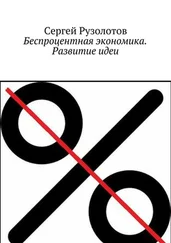Kuznets S. The National Economic Accounts of the United States: Review, Appraisal, and Recommendations. 1934. (accessed 15 January, 2010).
Kydland ЕЕ., Prescott E. C. Time to Build and Aggregate Fluctuations // Econometrica. 1982. Vol. 50 (6). P. 1345–1370.
Lakoff G. Don't Think of an Elephant! Know Your Values and Frame the Debate – The Essential Guide for Progressives. New York: Chelsea Green, 2004.
Leeper E., Yang Shu-Chun. Dynamic Scoring: Alternative Financing Schemes // Journal of Public Economics. 2008. Vol. 92 (1–2). P. 159–182.
Leigh A., Jencks Ch. Inequality and Mortality: Long-run Evidence from a Panel of Countries // Journal of Health Economics. 2007. Vol. 26 (1). P. 1–24.
LeRoy S. Excess Volatility Tests // S. Durlauf, L. Blume (eds). The New Palgrave Dictionary of Economics. London: Palgrave Macmillan, 2006. .
Levitt S. My Colleague Casey Mulligan in the Times: There is No Reason to Panic. 2008. (accessed 15 May, 2010).
Lindsey L. Individual Taxpayer Response to Tax Cuts: 1982–1984, with Implications for the Revenue Maximizing Tax Rate // Journal of Public Economics. 1987. Vol. 33 (2). P. 173–206.
L o A. W., MacKinlay A. C. A Non-Random Walk Down Wall Street. Princeton: Princeton University Press, 2001.
Long J., Plosser C. Real Business Cycles // Journal of Political Economy. 1983. Vol. 91 (1). P. 39–69.
Lucas R. Econometric Policy Evaluation: A Critique // K. Brunner, A. Meltzer (eds). The Phillips Curve and Labor Markets. New York: Elsevier, 1976. P. 19–46.
Lucas R. Understanding Business Cycles // K. Brunner, H. Meltzer (eds). Stabilization of the Domestic and International Economy. New York: Elsevier, 1977. P. 7–29.
Lucas R. Methods and Problems in Business Cycle Theory // Journal of Money, Credit, and Banking. 1980. Vol. 12 (4). P. 696–715.
Luttwak E. Turbo Capitalism: Winners and Losers in the Global Economy. New York: Harper Collins, 1999.
Malkiel B. A Random Walk Down Wall Street: The Time-Tested Strategy for Successful Investing (Revised and Updated). New York: WW Norton, 1973; 2007.
Mankiw N. G. Consumer Durables and the Real Interest Rate // Review of Economics and Statistics. 1985. Vol. 67 (3). P. 353–362.
Mankiw N. Gregory and Matthew Weinzierl. Dynamic Scoring: A Back-of-the-Envelope Guide // Journal of Public Economics. 2006. Vol. 90. P. 1415–1433.
Manzi J. Keeping Americas Edge National Affairs. 2010. (accessed 1 March, 2010).
Marglin S., Schor J. The Golden Age of Capitalism. Oxford: Clarendon Press, 1990.
Marmot M. The Status Syndrome: How Social Standing Affects Our Health and Longevity. New York: Holt Paperbacks, 2005.
McCain J. John McCains Florida Primary Speech // New York Times. 2008. 29 January.
McKean R. The Unseen Hand in Government // American Economic Review. 1965. Vol. 55 (3). P. 496–506.
Mehra R., Prescott E. The Equity Premium: A Puzzle // Journal of Monetary Economics. 1985. Vol. 15 (2). P. 145–161.
Merton R. C. Theory of Rational Option Pricing // Bell Journal of Economics and Management Science. 1973. Vol. 4 (1). P. 141–183.
Mill J. S. Principles of Political Economy: And Chapters on Socialism (Oxford Worlds Classics). New York: Oxford University Press, 2008.
Minford P., Peel D. The Role of Monetary Stabilization Policy under Rational Expectations // Manchester School of Economics & Social Studies. 1981. Vol. 49 (1). P. 39–50.
Minsky H. John Maynard Keynes. London: Macmillan, 1975.
Minsky H. Can «It» Happen Again? New York: M. E. Sharp, 1982.
Minsky H. Stabilizing an Unstable Economy. New Haven, CT: Yale University Press, 1986.
Mises L., Rothbard M. N., Haberler G., Hayek F. A. The Austrian Theory of the Trade Cycle and Other Essays. Auburn, AL: Ludwig Von Mises Institute, 1996.
Mishel L., Bernstein]., Allegrett o S. The State of Working America 2006/2007. Washington, DC: Economic Policy Institute, 2006.
Modigliani E, Papademos L. Targets for Monetary Policy in the Coming Year // Brookings Papers on Economic Activity. 1975. Vol. 1. P. 141–165.
Monter o A. State Interests and the New Industrial Policy in Brazil: The Privatization of Steel, 1990–1994 // Journal of Interamerican Studies and World Affairs. 1998. Vol. 40 (3). P. 27–62.
Moss D. When All Else Fails: Government as the Ultimate Risk Manager. Cambridge, MA: Harvard University Press, 2002.
Mueller D. Public Choice II. Cambridge: Cambridge University Press, 1989.
Mulligan C. An Economy You Can Bank on // New York Times. 2008. 9 October, (accessed 15 May, 2010).
Mulligan C. Aggregate Implications of Labor Market Distortions: The Recession of 2008–2009 and Beyond. NBER Working Paper No. 15681. National Bureau of Economic Research, Cambridge, MA, 2009.
Muth J. Rational Expectations and the Theory of Price Movements // Econometrica. 1961. Vol. 29 (3). P. 315–335.
Nairn B. Civilising Capitalism: The Beginnings of the Australian Labor Party. Melbourne: Melbourne University Press, 1989.
Nash J. Non-cooperative Games // Annals of Mathematics. 1951. Vol. 54. P. 286–295.
Neumann J. von, Morgenstern O. Theory of Games and Economic Behavior. Princeton: Princeton University Press, 1944.
New Economics Foundation. A Bit Rich: Calculating the Real Value to Society of Different Professions. 2009. (accessed 12 February, 2010).
Norvell S. Rally around the Economy, As Well As Flag. Fox News, 2001. 17 September. .
Valley Th. Speculation and Tobin Taxes: Why Sand in the Wheels Can Increase Economic Efficiency // Zeitschrift fur Nationalokonomie. 1999. Bd. 69 (2). S. 113–126.
Phelps E. Money-Wage Dynamics and Labor-Market Equilibrium//Journal of Political Economy. 1968. Vol. 76 (4). P. 678–711.
Phillips A. W. The Relationship between Unemployment and the Rate of Change of Money Wages in the United Kingdom, 1861–1957 // Economica. 1958. Vol. 25 (4). P. 283–299.
Pigou A. C. The Economics of Welfare. London: Macmillan, 1920.
Piketty Th., Saez E. Income Inequality in the United States, 1913–1998 // Quarterly Journal of Economics. 2003. Vol. 118 (1). P. 1–39.
Piketty Th., Saez E. The Evolution of Top Incomes: A Historical and International Perspective // American Economic Review. 2006. Vol. 96 (2). P. 200–205.
Plosser Ch. Understanding Real Business Cycles // Journal of Economic Perspectives. 1989. Vol. 3 (3). P. 51–77.
Putnam R. Bowling Alone: The Collapse and Revival of American Community. New York: Simon & Schuste, 2001.
Quiggin J. A Theory of Anticipated Utility // Journal of Economic Behavior and Organization. 1982. Vol. 3 (4). P. 323–343.
Quiggin J. Egoistic Rationality and Public Choice: A Critical Review of Theory and Evidence // Economic Record. 1987. Vol. 6 (180). P. 10–21.
Quiggin J. Generalized Expected Utility Theory: The Rank-Dependent Model. Amsterdam: Kluwer, 1993.
Quiggin J. Does Privatisation Pay? // Australian Economic Review. 1995. Vol. 110. 2nd quarter. P. 23–42.
Quiggin J. Privatisation // I. Mcallister, S. Dowrick, R. Hassan (eds). The Cambridge Handbook of the Social Sciences in Australia. Melbourne: Cambridge University Press, 2003. P. 17–30.
Quiggin J. The Unsustainability of U. S. Trade Deficits // The Economists' Voice. 2004. Vol. 3. Article 2.
Читать дальше
Конец ознакомительного отрывка
Купить книгу











